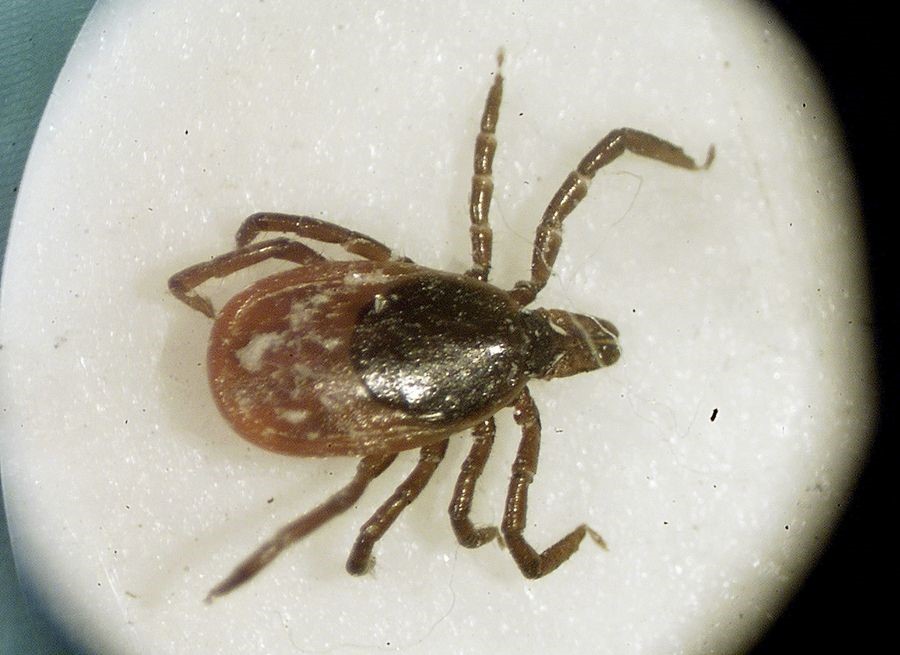
Tick season has already started in Illinois, despite this year’s cooler spring weather.
And with May being National Lyme disease Awareness Month, state and Chicago-area ecologists and health officials are offering tips for residents to avoid debilitating or deadly tick-borne disease from bites.
“In my field experience, April through August seems to be the prime tick season,” said Ken Klick, a restoration ecologist with the Lake County Forest Preserves. “I’ve had ticks crawling on me for the past month already, so it doesn’t necessarily need to be warm and sunny.”
DuPage County Forest Preserve District ecologist Andres Ortega has noticed many more visitors seeking out safer activities outdoors versus indoors amid the COVID-19 pandemic. So he wants residents to be prepared for ticks — not fearful of them.
“Ticks are an unfortunate but natural part of the Illinois landscape,” Ortega said. “Try and stay out of what we call prime tick habitat.”
These include tall grassy areas and wooded areas with a lot of leaf litter on the grounds.
Ortega notes there has been some tick species migration detected in the collar counties of Chicago with more blacklegged ticks (or deer ticks) coming down from Wisconsin. Last year, Gulf Coast ticks also were found in DuPage County, which is notable because they’re typically found in southeastern states and Southern Illinois.
Blacklegged ticks are known for being the main vector for Lyme disease, which brings such symptoms as fatigue and rashes and even memory loss in late-stage cases. Meanwhile, Gulf Coast ticks can carry the pathogen causing Tidewater spotted fever, which can cause headaches, fever, muscle aches and more.
The Illinois Department of Public Health in recent years has created an online statewide “Tick Surveillance Map” at dph.illinois.gov. The site details the traits of different tick species and the counties where they are established or have been reported.
The IDPH has also provided these precautionary tick tips:
- Walk in the center of trails while visiting forest preserves or other nature areas.
- Treat clothing and gear with products containing 0.5% permethrin. Permethrin can be used to treat boots, clothing and camping gear and remain protective through several washings. Ortega warned that permethrin should be used only on outer clothing and gear — not on skin.
- Use EPA-registered repellents containing DEET or picaridin. Always follow product instructions.
- Check your body for ticks after being outdoors. Conduct a full-body check upon return from potentially tick-infested areas, including your own backyard. Use a hand-held or full-length mirror to view all parts of your body.
- Check these parts of your body and your child’s body for ticks: Under the arms, in and around the ears, inside the belly button, the back of the knees, in and around the hair, between the legs and around the waist.
- Shower soon after being outdoors. Showering within two hours of coming indoors has been shown to reduce your risk of getting Lyme disease and may be effective in reducing the risk of other tick-borne diseases.
- Contact a medical provider if you begin to experience any tick-borne disease symptoms.
Both Klick and Ortega also advise wearing tucked-in, long-sleeved tops and trousers to limit the potential skin contact for ticks.
“Take the precautions and enjoy nature,” Klick said. “Don’t be afraid to go outside.”
